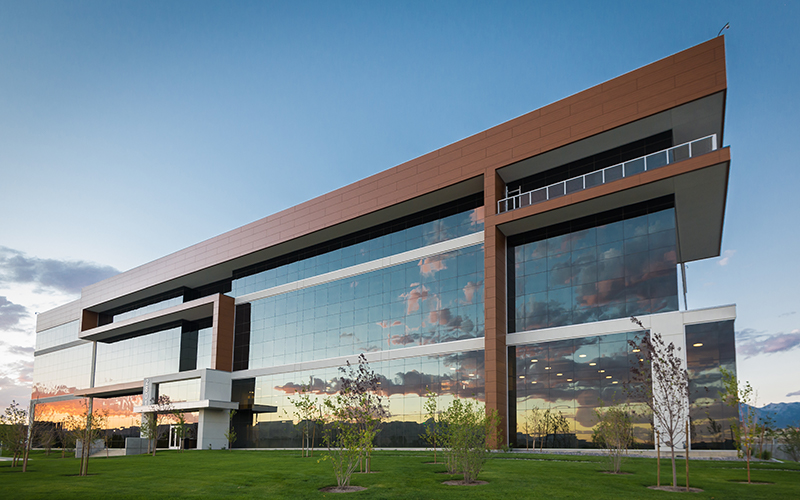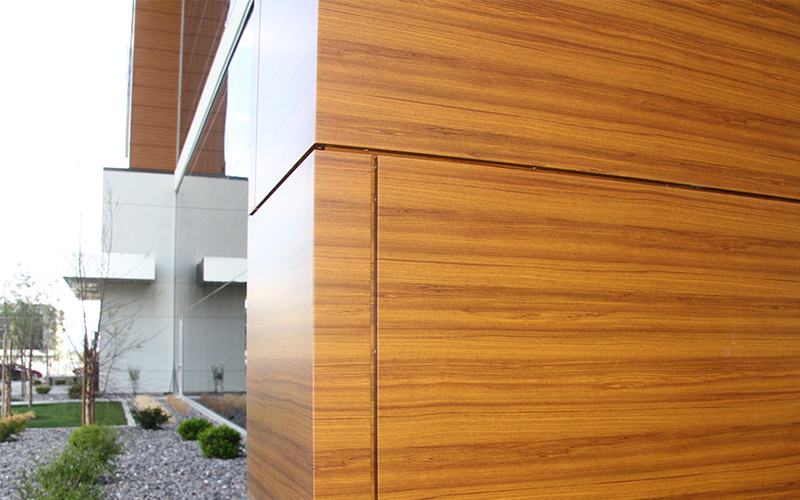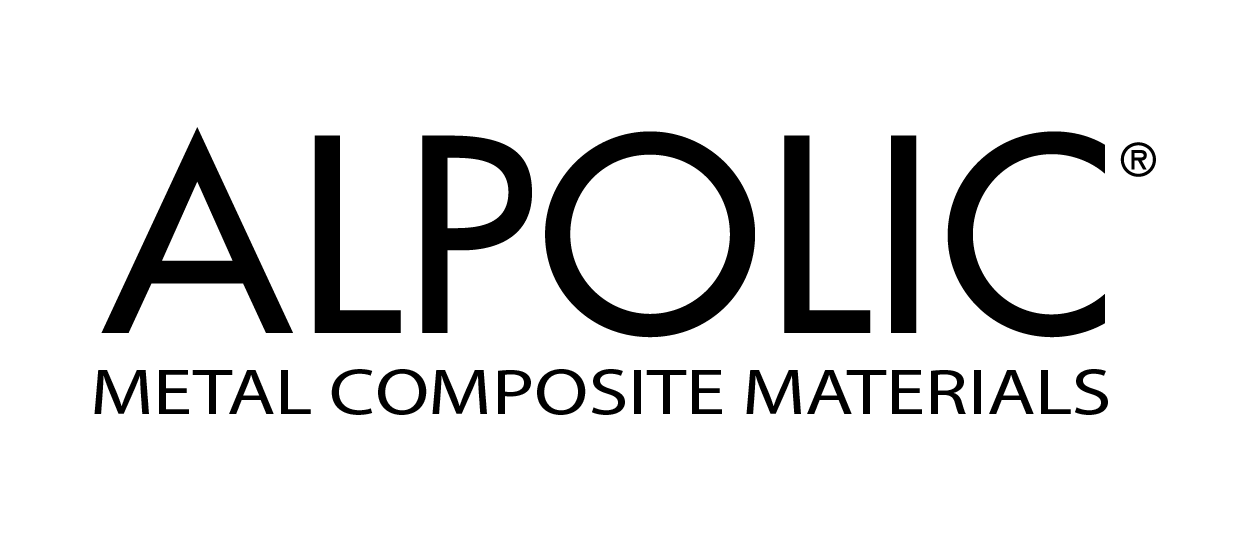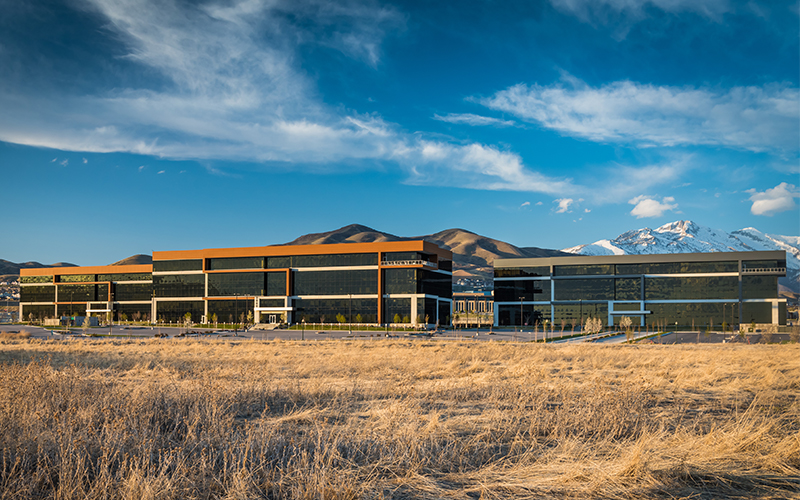Beecher Walker Architects wanted more than just a standard “office box” for its Thanksgiving Station Office Park project. The development, located in the budding technology hub referred to as Silicon Slopes, had a clear vision: incorporating the crisp lines of modern architecture with the warm and inviting patterns of timber. The challenging Utah climate made traditional material choices impractical, but the design was key for Jory Walker, Principal, President and Lead Designer. “Let’s face it, when many think of Utah, they think cold, but the wooded beauty and mountain ranges of the Salt Lake Valley are stunning so why not take a modern interpretation of that using glass, wood and structural height?”
Walker, who is both a sculptor and architect by training, sought to break the mold of traditional office spaces which are often designed in box shapes for the practical reasons of simplified construction and cost. “When you have all these young, progressive, cutting-edge companies pushing the boundaries every day, the buildings that house them need to be just as progressive and out-of-the box,” said Walker. The goal became to push the design envelope while maintiaining these considerations at the forefront. Walker proceeded to “sculpt” his vision in the fall of 2014 and completed construction in April 2016.
 Photography by Corey Middleton and courtesy of Beecher Walker.
Photography by Corey Middleton and courtesy of Beecher Walker.
ALPOLIC offers solutions for challenging environmental conditions.
In the end, the building’s cladding proved to be the biggest challenge. The inspiration, a Scandinavian wood rainscreen system, was both cost prohibitive and would have resulted in weatherproofing concerns in the harsh climate. The design team researched various alternatives before settling on ALPOLIC Metal Composite Materials (MCM). This lightweight, affordable building material provided the look of real wood without the cost and maintenance concerns. Walker was also impressed with the functional advantages of fabricating MCM. “The panels can be formed into any shape we felt best fit the design of the building while still bringing in the look of wood.”
 Photography by Corey Middleton and courtesy of Beecher Walker
Photography by Corey Middleton and courtesy of Beecher Walker
The Thanksgiving Station project started as a modern interpretation of the stunning Utah landscape while providing all the advantages of a developing metropolitan area. Twenty-five miles south of downtown Salt Lake City, the project is located at the center of Silicon Slopes in Lehi, UT. Once rural, growth in the technology center has created a vibrant community nestled with views of the Wasatch mountain range. The final design speaks to both the area’s natural beauty and spirit of innovation. “It’s easy to create something spectacular when you have a large budget, but in this climate of spec office buildings (which this was when we started it), it’s hard to create ‘wow’ and make it pencil at the same time,” said Walker. The innovative design caught immediate attention and the project became an iconic symbol of Silicon Slopes. “It is exciting to create something that gets so much buzz, introducing a newlook and feel in the valley. It broke the mold and ushered in a new way of thinking in the design community in Utah.”
Quality composite materials make the difference.
For Beecher Walker Architects, premium ALPOLIC MCM made the design come alive, allowing them to stay in budget without sacrificing design intent. Other materials that were in consideration, such as wood or solid metal planks and stone veneers, would have increased cost, limited design and burdened the building owner with maintenance. “We have used ALPOLIC on many buildings and feel that it is a premium product that has allowed us to better design our facades in ways that other materials couldn’t. We are always finding new ways or architectural designs using ALPOLIC. Nearly every commercial building that we have in design at this point will likely have ALPOLIC specified in some way.”

ALPOLIC
1.800.422.7270
info@alpolic.com
www.alpolic-americas.com
Related Stories
| Aug 11, 2010
AAMA leads development of BIM standard for fenestration products
The American Architectural Manufacturers Association’s newly formed BIM Task Group met during the AAMA National Fall Conference to discuss the need for an BIM standard for nonresidential fenestration products.
| Aug 11, 2010
9 rooftop photovoltaic installation tips
The popularity of rooftop photovoltaic (PV) panels has exploded during the past decade as Building Teams look to maximize building energy efficiency, implement renewable energy measures, and achieve green building certification for their projects. However, installing rooftop PV systems—rack-mounted, roof-bearing, or fully integrated systems—requires careful consideration to avoid damaging the roof system.
| Aug 11, 2010
Pella introduces BIM models for windows and doors
Pella Corporation now offers three-dimensional (3D) window and door models for use in Building Information Modeling (BIM) projects by architects, designers, and others looking for aesthetically correct, easy-to-use, data-rich 3D drawings.
| Aug 11, 2010
AAMA developing product-based green certification program for fenestration
The American Architectural Manufacturers Association is working on a product-based green certification program for residential and commercial fenestration, the organization announced today. AAMA will use the results of a recent green building survey to help shape the program. Among the survey's findings: 77% of respondents reported a green certification program for fenestration would benefit the product selection process for their company.
| Aug 11, 2010
Seven tips for specifying and designing with insulated metal wall panels
Insulated metal panels, or IMPs, have been a popular exterior wall cladding choice for more than 30 years. These sandwich panels are composed of liquid insulating foam, such as polyurethane, injected between two aluminum or steel metal face panels to form a solid, monolithic unit. The result is a lightweight, highly insulated (R-14 to R-30, depending on the thickness of the panel) exterior clad...
| Aug 11, 2010
AIA Course: Enclosure strategies for better buildings
Sustainability and energy efficiency depend not only on the overall design but also on the building's enclosure system. Whether it's via better air-infiltration control, thermal insulation, and moisture control, or more advanced strategies such as active façades with automated shading and venting or novel enclosure types such as double walls, Building Teams are delivering more efficient, better performing, and healthier building enclosures.







